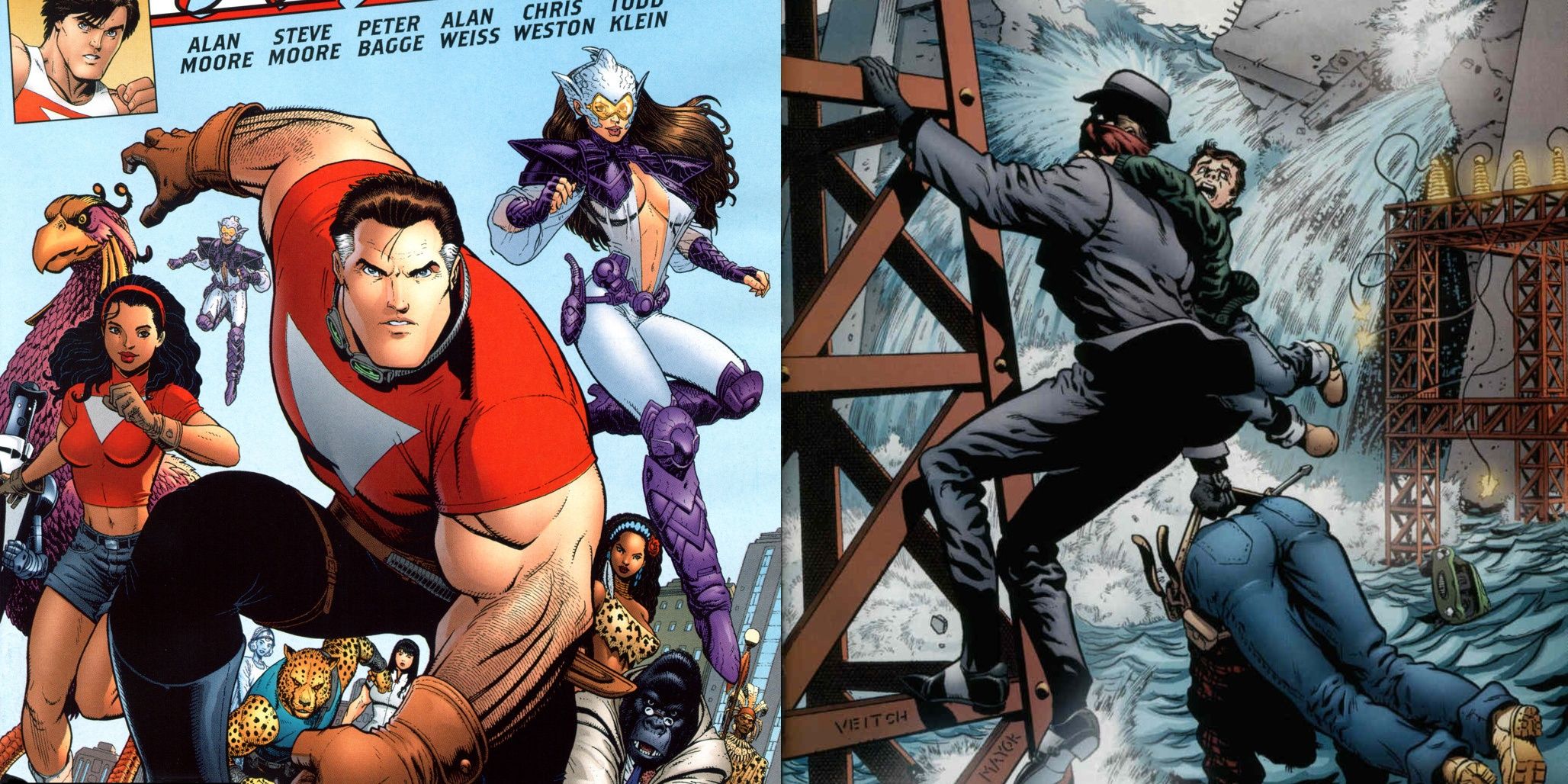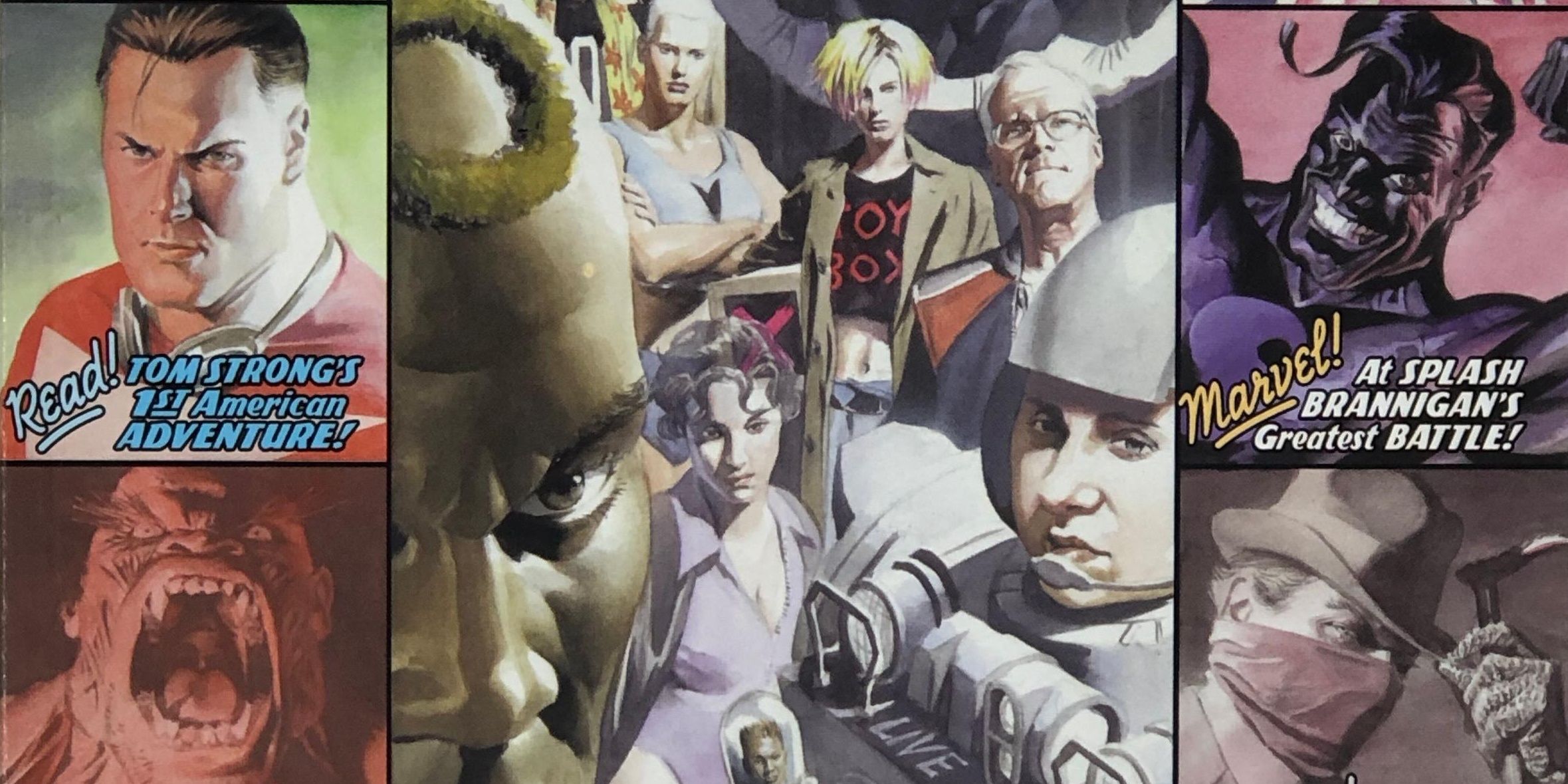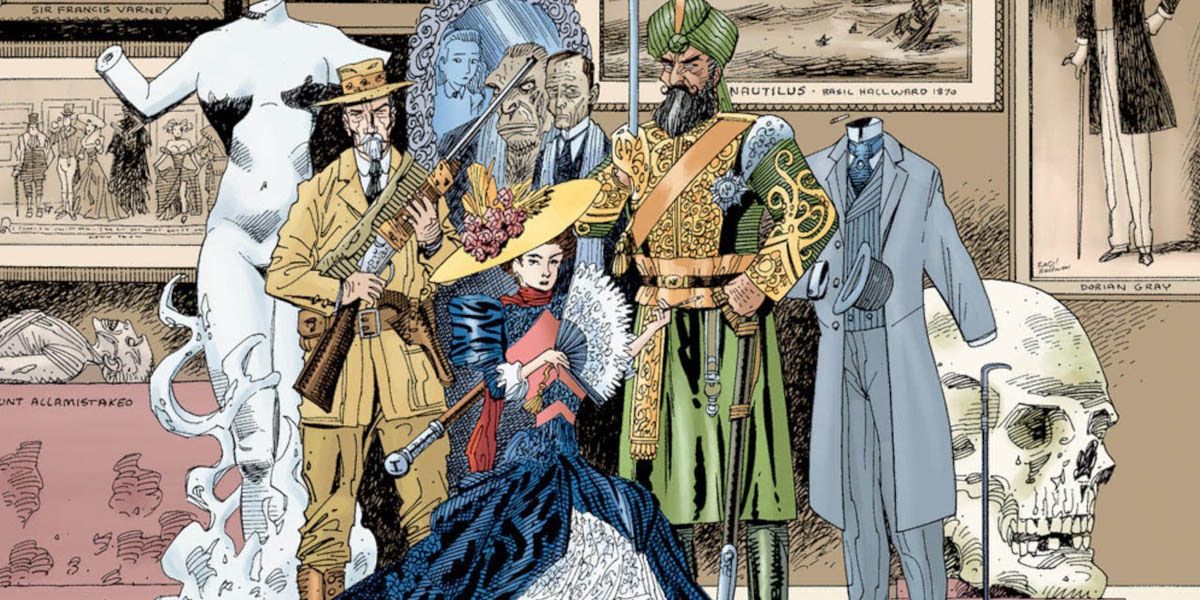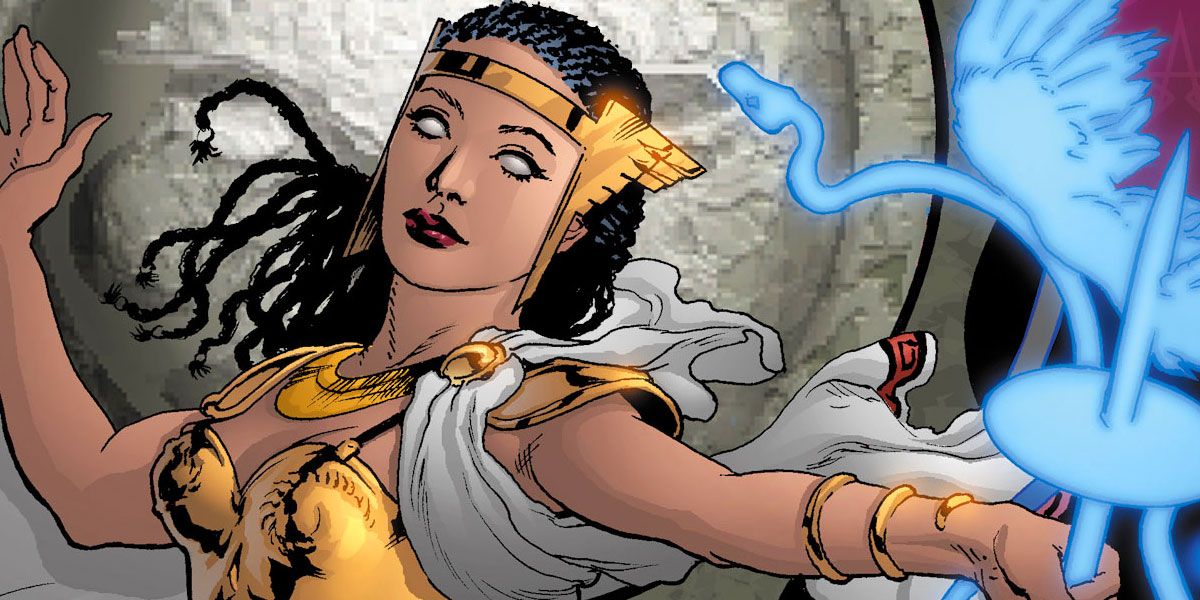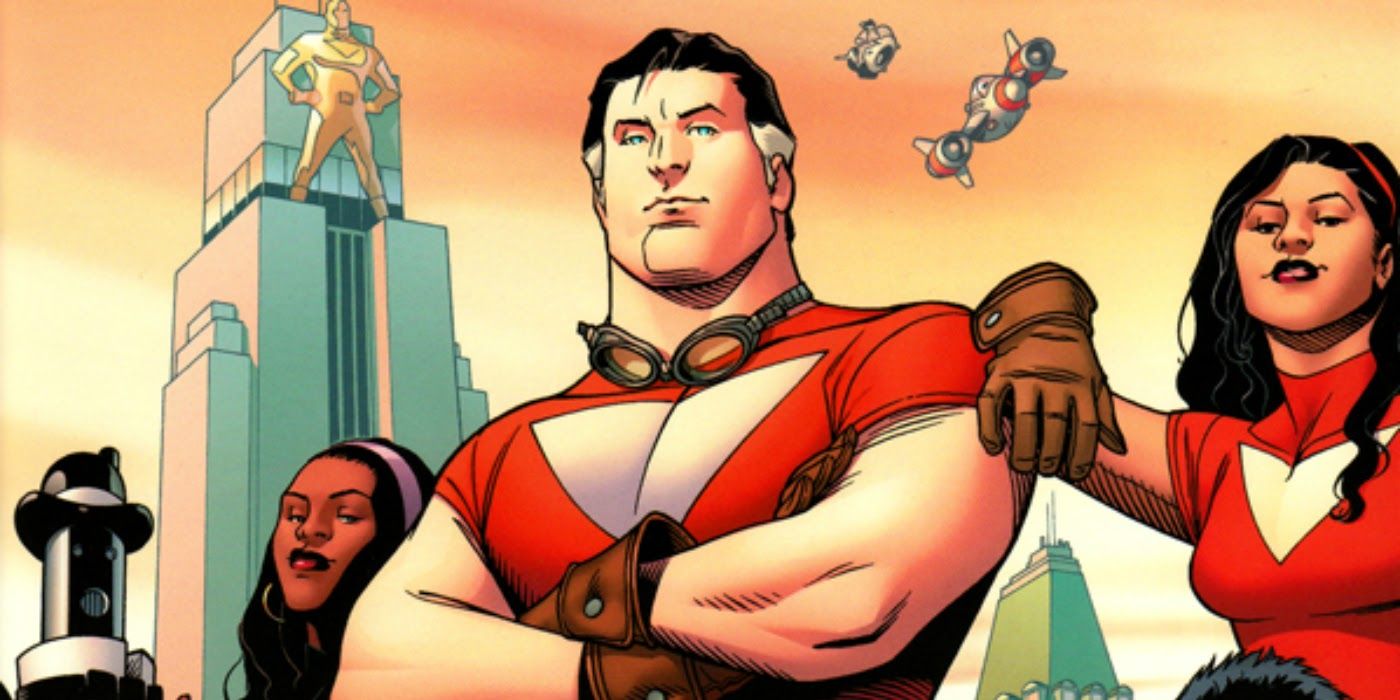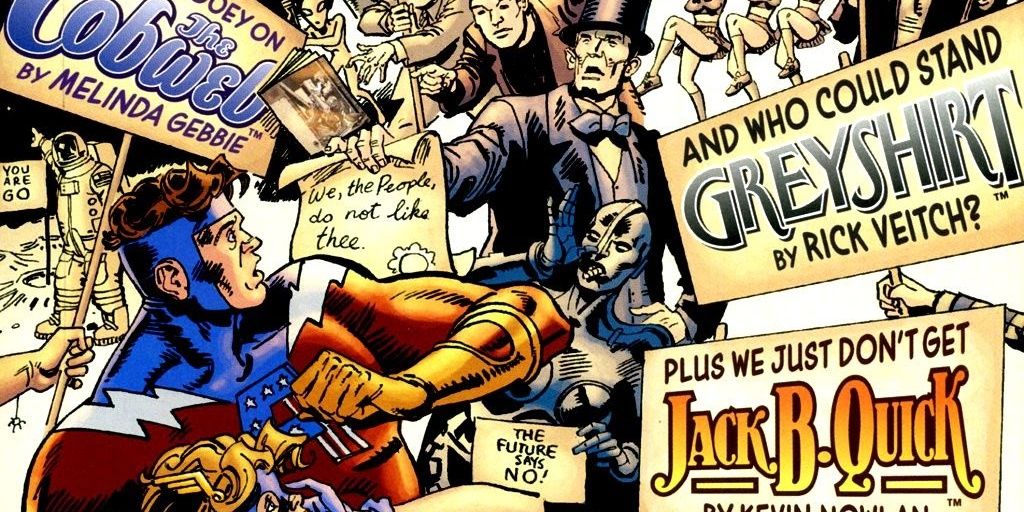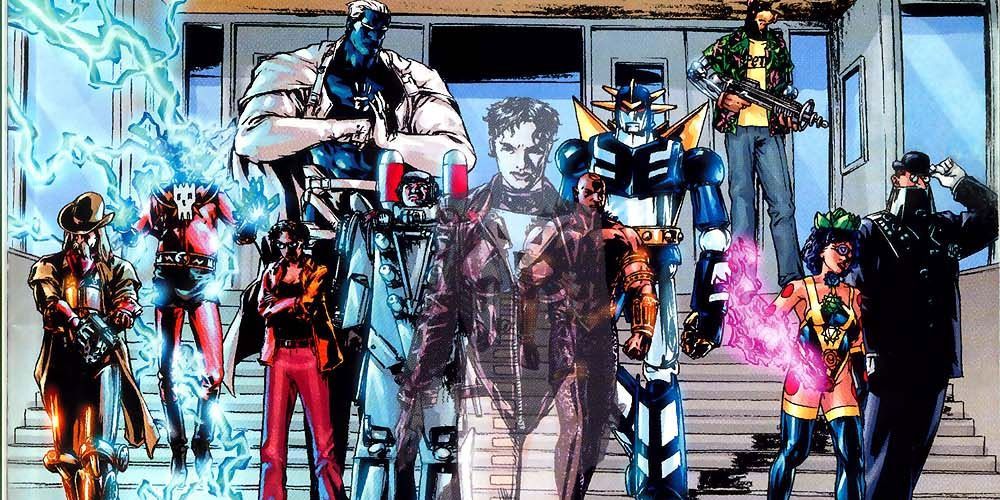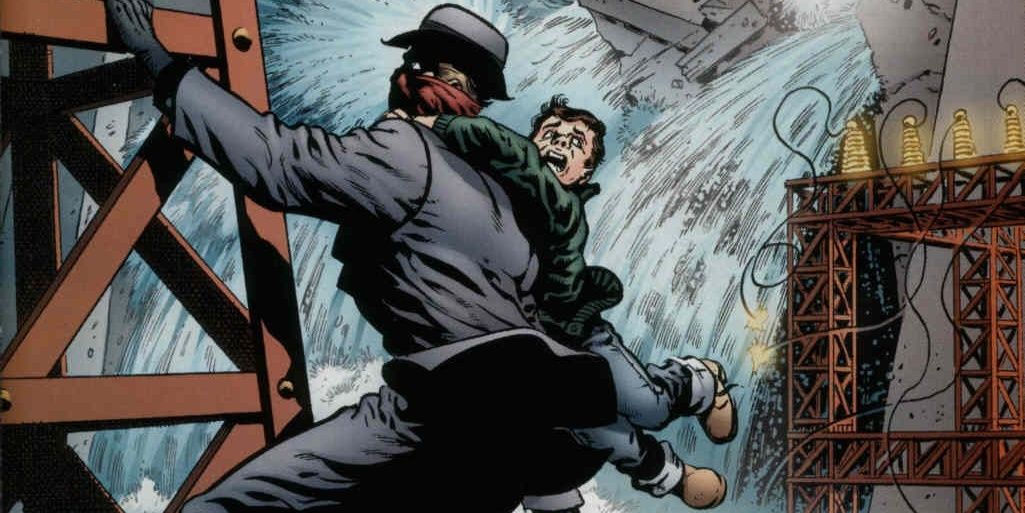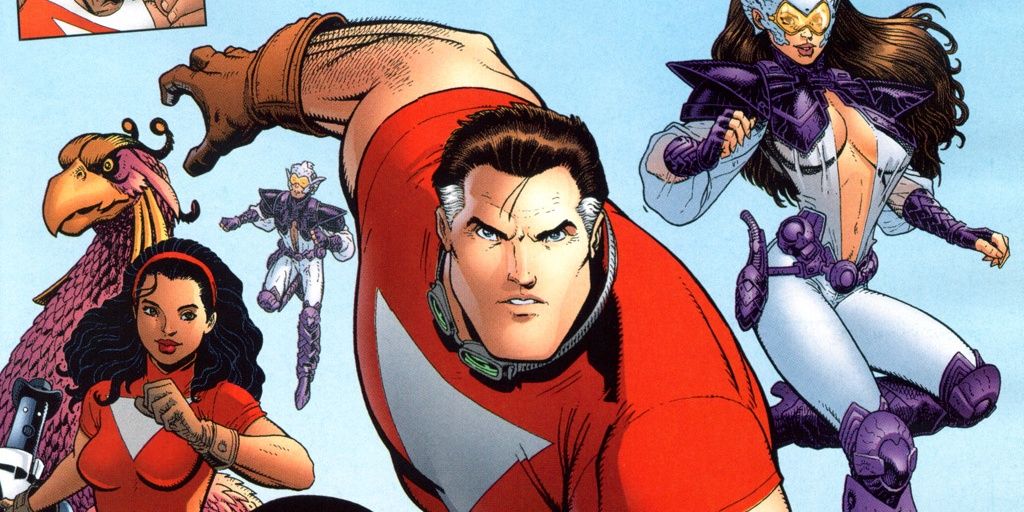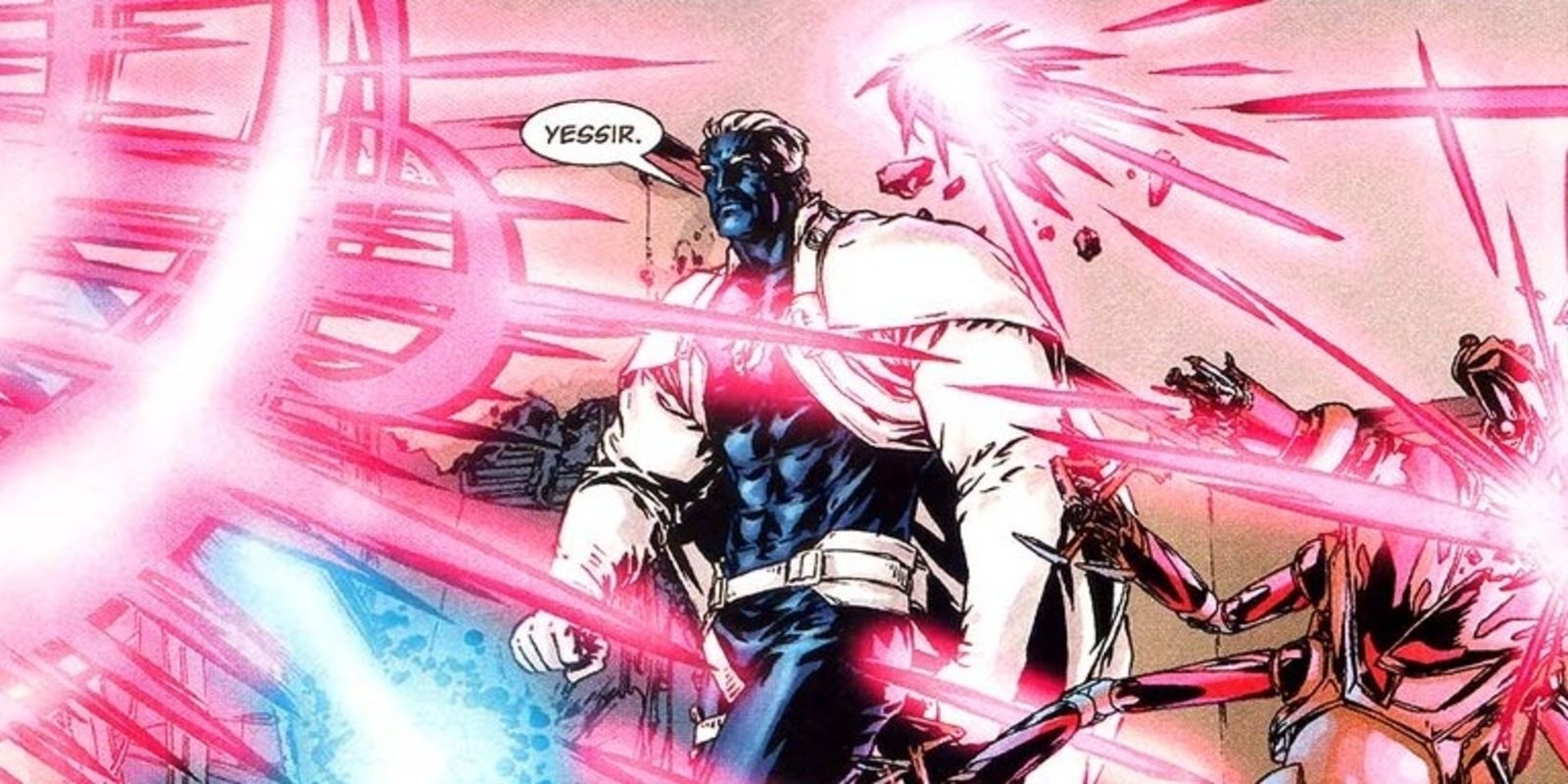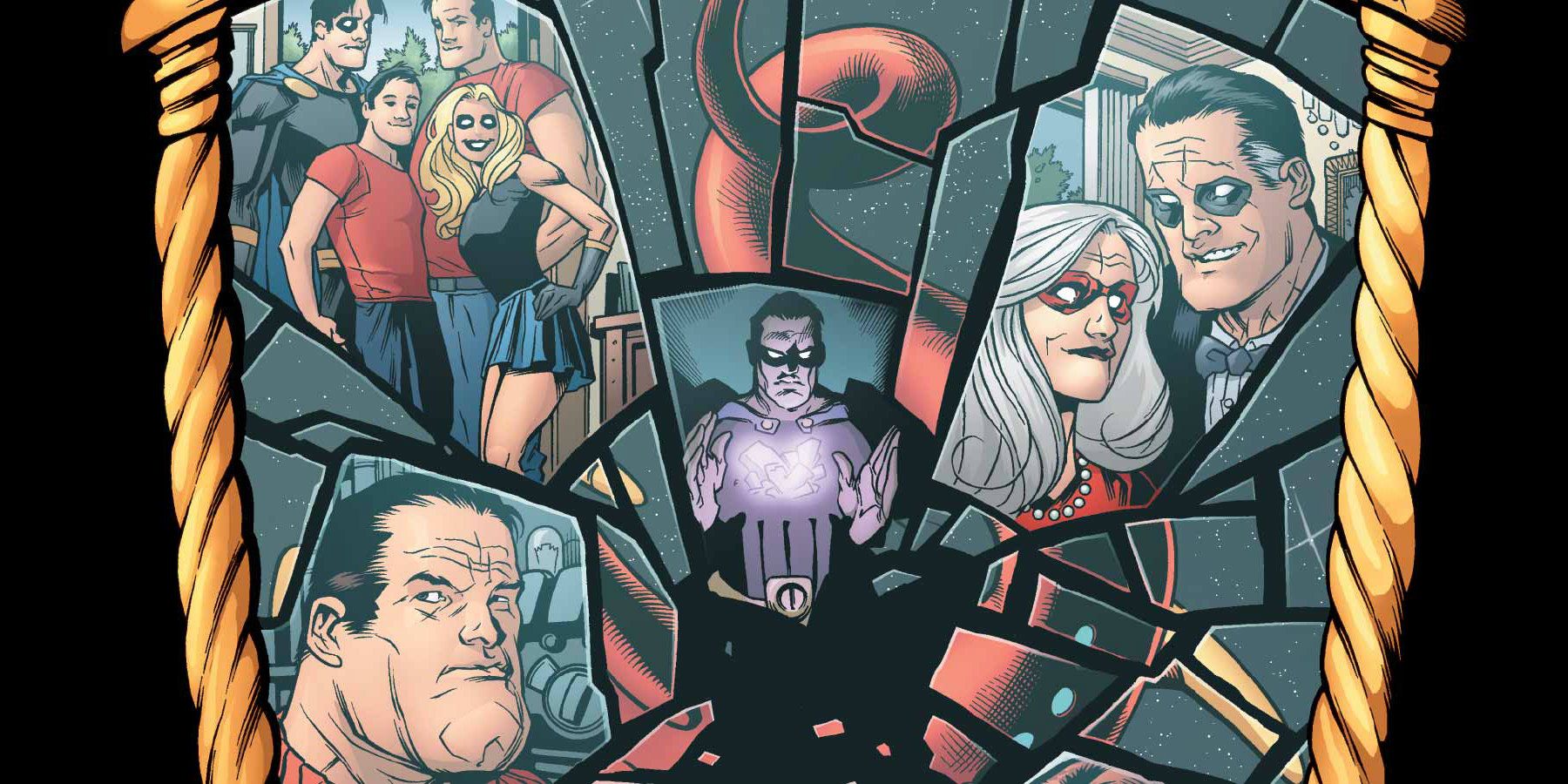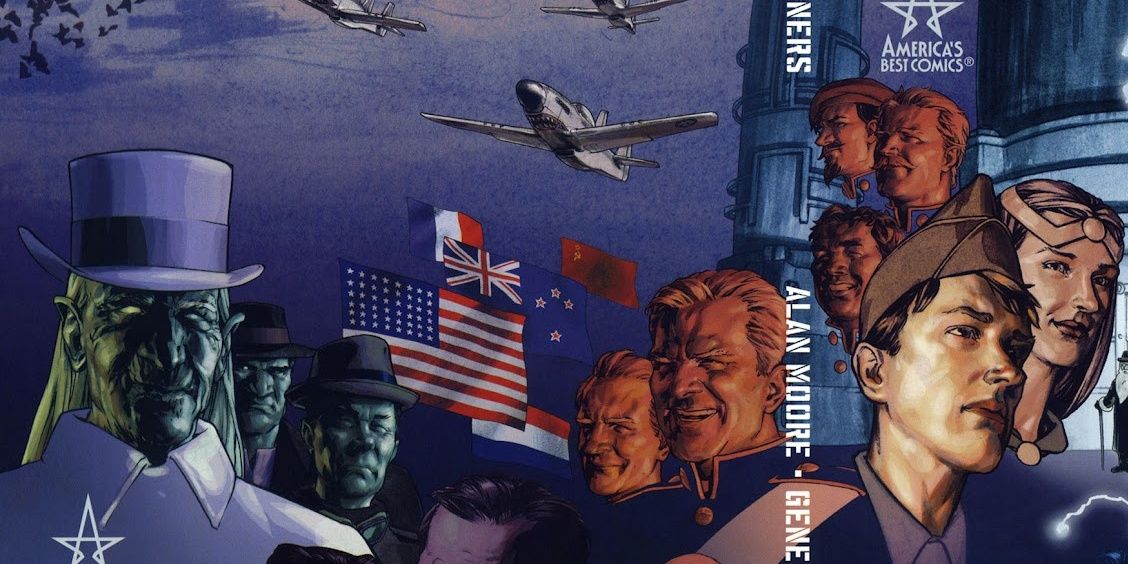Alan Moore is one of the most revered comic book writers in the medium's history. After permanently disrupting superhero comics in the mid-80s, Moore stepped away from the genre. This changed during the turn of the millennium when he launched America's Best Comics (ABC) under Jim Lee's Wildstorm publishing line.
The ABC imprint was populated by a shared universe of pulp heroes that represented an alternate history of American comics, one in which Superman didn't become a model for the rest of the medium. Alan Moore assembled a murderer's row of creative talent and developed a line of nostalgic and meticulously crafted comics. However, due to various reasons, Moore exited the line in 2005.
11 Everything Began With Best Comics 64-Page Giant
The ABC line kicked off with America's Best Comics 64-Page Giant, which was designed in the mold of the Superman Giants of the Silver Age. It was also one Alex Ross's painted cover paid homage to. The one-shot acted as a pilot for series like Tom Strong and Promethea, as well as an introduction to characters like Jack B. Quick and The Cobweb.
Behind the scenes, Moore was joined by several key members of the ABC creative roster, including Gene Ha, Kevin O'Neil, and Steve Moore. Notable guest creators included Sergio Aragones and John Cassaday.
10 The League of Extraordinary Gentlemen Is The Longest ABC Property
The League of Extraordinary Gentlemen (LoEG), created by Alan Moor and Kevin O'Neil, is the most popular series published under the ABC imprint. Since the property was creator-owned, Moore and O'Neil eventually moved it to other publishers after ABC was dissolved.
The comic stars a team composed of revisionist takes on literary characters like Captain Nemo, Allan Quarterman, and The Invisible Man. The LoEG's adventures take place around the end of the 19th Century and often intersect with contemporary events, both historical and fictional.
9 Promethea Celebrated The Magic Of Narrative
Sophie Bangs, aka Promethea – a college student given magical powers – was created by Alan Moore, J.H. Williams III, and Mick Gray. The series explores the ability of narrative to influence reality and vice versa, which is a phenomenon Moore defines as magic.
It's clear Promethea was an outlet for themes Moore held close to his heart. Moore declared himself a magician in the mid-90s and the comic is often heralded as the pièce de résistance of the ABC line. In fact, J.H. Williams III and Mick Gray quickly earned a reputation for their experimental art.
8 Tom Strong Was A Brilliant Throwback Adventure Comic
Tom Strong was the flagship character of the ABC line. He was a mix of Superman and The Fantastic Four with a lot of Doc Savage thrown in. Co-created by Moore and artist Chris Sprouse, the comic centered on Tom Strong and his extraordinary family.
In many ways, the series was a spiritual successor to Alan Moore's run on Supreme, in which he crafted a model for superhero comics that rejected the nineties "extreme" sensibilities. Tom Strong was built on nuanced characters, playful humor, and ambitious science fiction concepts.
7 Tomorrow Stories Was A Star-Studded Anthology
Tomorrow Stories was an anthology series that continued the adventures of several key characters in the ABC universe. Alan Moore wrote the majority of the serials, teaming up with a variety of artists. Greyshirt, the gentleman sleuth, was co-created with Rick Veitch.
Meanwhile, The Cobweb, the diaphanous dynamite detective, was co-created by Melinda Gabbie. The Future American was a partnership with Jim Baikie, and Jack B. Quick, the young genius, was co-created with Kevin Nowlan. Other creators like Hilary Barta and Joyce Chin soon joined the series.
6 Top 10 Took Astro City To The Next Level
Top 10 was written by Alan Moore and penciled by Gene Ha with inks by Zander Cannon. It centered on officers in the 10th police precinct of a city called Neopolis, which mainly consisted of super-powered inhabitants in colorful costumes.
Moore and Ha somehow manage to blend the conventions of police procedural and workplace dramas with the usual super-powered hijinks, thus allowing their high concept to land. The series had a complicated publication history, which included spin-off miniseries, an OGN, and an incomplete second season.
5 Greyshirt: Indigo Sunset Was A Homage To Pulp Crime Fighter Tales
Greyshirt: Indigo Sunset was a six-issue miniseries from Rick Veitch, who handled both art and writing duties. The Greyshirt of Indigo city was a mysterious, masked character in the vein of crime fighters like The Shadow and The Spirit.
Veitch plays around with different art styles in inventive ways, helping the narrative weave in and out of different time periods and realities. The entire exercise is a love letter to pulpy crime stories from the '30s and '40s, all with a heavy dose of post-modernism.
4 Tom Strong's Terrific Tales Expanded The ABC Universe
Tom Strong's Terrific Tales was a quarterly anthology series that ran for 36 issues and starred the extended cast of Moore and Sprouse's Tom Strong comics. Alan Moore collaborated with Steve Moore on writing duties alongside a prestigious roster of artists like Jaime Hernandez and Art Adams.
Several stories featured Jonni Future, a homage to pulp interplanetary adventurers like John Carter and Barberalla, as well as Young Tom Strong. In 2003, Strong's daughter starred in a multiversal adventure in a one-shot entitled The Many Worlds of Tesla Strong.
3 Smax Was A Fantasy Police Drama
Demi-ogre policeman Jeff Smax was a major character from Alan Moore, Gene Ha, and Zander Cannon's Top 10 series. He was eventually spun out into his own five-issue limited series. Smax was written by Moore and illustrated by Cannon, whose pencils were a little more traditional than Ha's.
The miniseries filled out Smax's backstory by sending him back to his home world, and it also formed a significant part of the overall Top 10 narrative. Unlike the superhero bent of Top 10, this series reveled in the conventions of the fantasy genre.
2 Terra Obscura Was Tom Strong Through A Cracked Mirror
Terra Obscura was a planet on the other end of the universe that closely resembled our Earth, right down to having a doppelganger of Tom Strong named Tom Strange. It's exactly the sort of thing that happened all the time in Silver Age Superman comics, albeit with darker twists and more serious stakes.
This concept was given two six-issue miniseries titled Terra Obscura and Terra Obscura: Volume 2. The comics were written by Alan Moore and Peter Hogan and illustrated by Yannick Paquette and Karl Story.
1 The Forty-Niners Was A Top 10 Prequel
Alan Moore continued the Top 10 saga with an original graphic novel, Top 10: The Forty-Niners, reuniting him with artists Gene Ha and Zander Cannon. The OGN was a prequel set in 1949 that expanded the mythology of Neopolis in multiple directions.
Two years later, Moore released The League of Extraordinary Gentlemen: The Black Dossier, and officially concluded his time under the ABC imprint. True to form, DC Comics, which had purchased Wildstorm, made multiple attempts to absorb Moore's characters into their shared universe.

